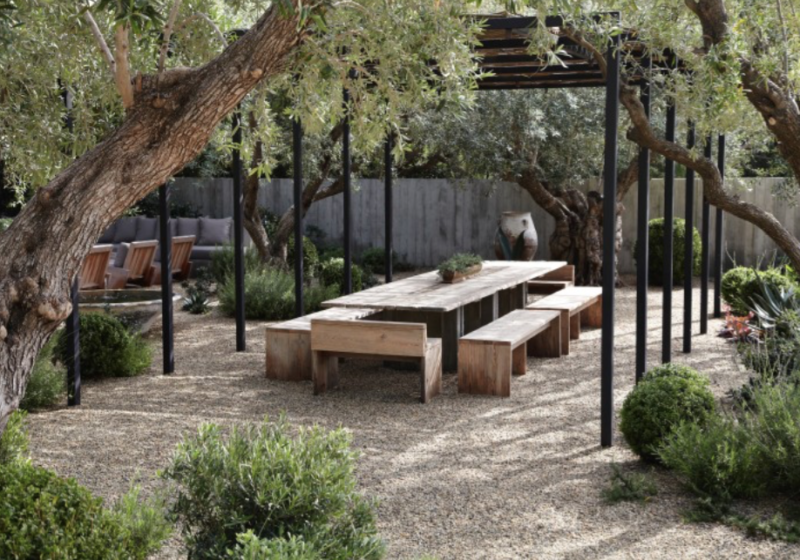When it comes to creating a great outdoor space, think of the post-war boom that spawned suburbia, where even a postage-stamp lot had a backyard for lounging in as well as a front garden, and modernist landscape architects made the most of both. Leading American blog, Remoedelisa reports in a feature on the subject this month, that patios, pools, and backyard grills all got a boost from simple, budget-friendly principles of mid-century garden design.
Remodlista says “By simplifying and streamlining landscapes, modernist landscape designers lured homeowners to explore the possibilities of their outdoor spaces and, by extension, to appreciate nature. Decades later, contemporary gardens are still influenced in big and small ways by the modernist goal to annex the outdoors as living space. Here are 10 garden ideas to steal from the modernists for your own landscape,” :
Restrained Palettes
Modernist landscape architect Thomas Church (inventor of the kidney-shaped swimming pool) believed that a simple planting scheme with a limited number of varieties would make maintenance easier.
Start with a strong garden design, and you can always go back later and add more plants if you want, Church believed.
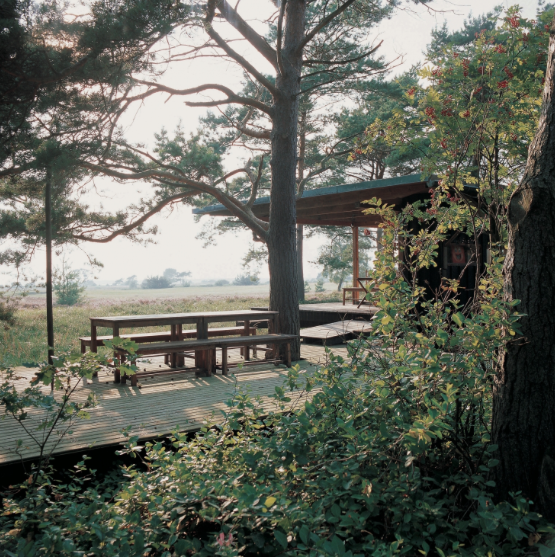
Photograph courtesy of Frances Lincoln.
Outdoor Living Rooms
An idea that emanated strongly from mid-century California: Fling open the doors and windows so you can add the extra square footage of patios and courtyard into your living area. If you live in a colder climate, you won’t be able to do this year-round, of course. But so long as you use weather-resistant materials in an outdoor living space, it will stand up to the seasons year after year.
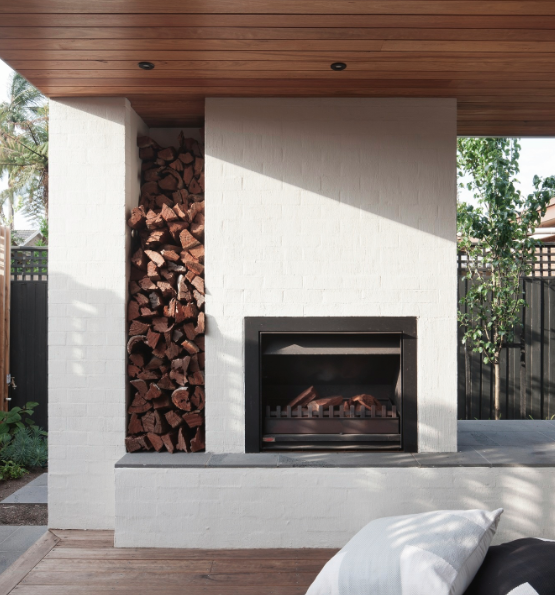
During a remodel to a 1960s-era house in Melbourne suburb of Caulfield, Australia the homeowners added an open-air living room with a fireplace. Photograph by Shannon McGrath.
Sculptural Plants
Fewer plants means less work. The modernists replaced fussy flower beds that needed weeding, clipping and deadheading with well-placed, sculptural specimens.
It’s easy to borrow this idea for your own garden, especially if you have a no-maintenance gravel courtyard instead of a lawn. The natural colours of crushed stone will complement and emphasize the greenness of foliage. A single large plant, or three, goes a long way.
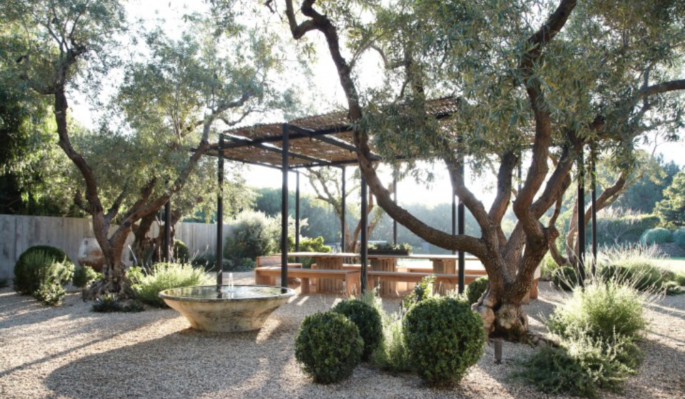
Photograph by Mark Adams courtesy of Scott Shrader Design.
Geometry
Modernist gardens relied on repetition of simple shapes—squares, rectangles, circles, and triangles—to create a sense of order. You can do the same: consider metal landscape edging to define a boundary or a tightly clipped shrub to create a soothing sphere.
Curves
“A curved line against a view presents the least irritation” to the eye as you seek a distant view, landscape architect Church believed. To that end, his California gardens had irregularly shaped patches of lawn, kidney-shaped swimming pools, and meandering paths.
Look at your land, where it rises and where it ebbs, and follow the undulations with your eye. If that’s a pleasing view, you can reinforce it with curves in paths, retaining walls, or other hardscape elements.
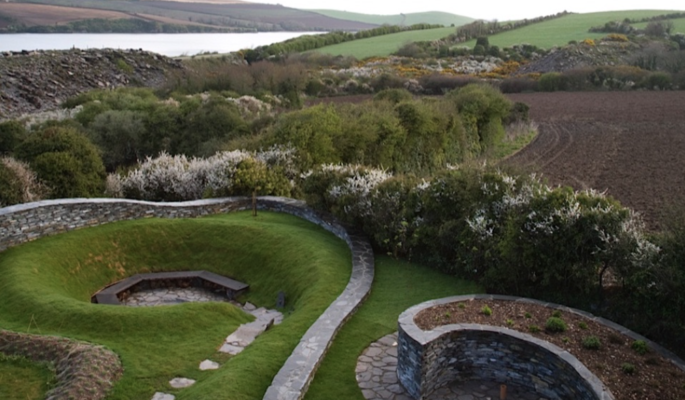
Irish landscape designer Mary Reynolds created an undulating landscape in a remote, untamed place on the Cornish coast with organic, sinuous forms that echo the way the land rolls down to the water. Photograph by Dan Duchars.
Setting Boundaries
To make the most of limited space in suburban gardens, modernists demarcated it. Using shrubs and trees to mark boundaries, they divided a garden into distinct areas for dining, lounging, and play.
In a small garden, you can create different “rooms” with low-growing border plants or shrubs that divide the space without blocking your view.
Seamless Connections
In Modernist gardens, the material underfoot—such as concrete or stone—was often a seamless continuation of the flooring used indoors. When the materials match, the spaces feel more connected.
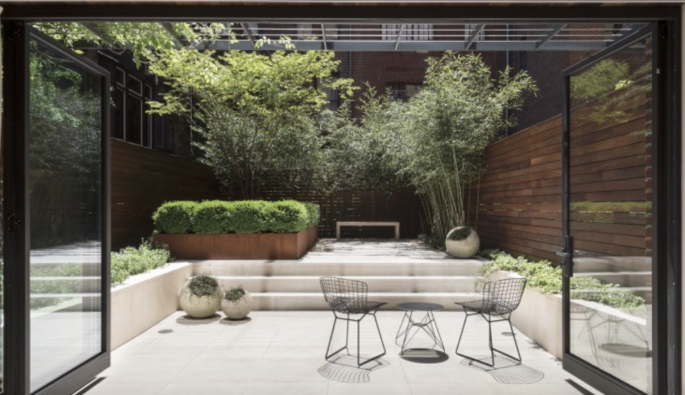
Landscape designer Julie Farris of XS Space used the same paving material— Valders Limestone—that was underfoot in her client’s remodelled kitchen. Photograph by Matthew Williams.
Grid System
A repetitive, geometric pattern of grids is a hallmark of mid-20th century design. Modernist gardens have clean lines, sharp angles, and a clear demarcation of space as seen in the front garden shown above.
You can follow suit by laying out a garden on a grid, with boundaries for patios, paths, lawns, play areas, and entryways.
Budget Friendly Landscape
Think of the prefab house that legendary designers Charles and Ray Eames built for themselves in Los Angeles in the 1940s, which became one of Modernism’s most iconic structures. The goal was for the house to fit into the landscape rather than to conquer the land: the original building plans were altered to preserve a meadow where the couple liked to picnic.
Follow the Eameses’ lead with landscape (including terraces, courtyards, paths, and entryways) built of natural materials such as wood, stone, small rocks, and bricks—to deepen the connection between indoor living spaces and the surrounding landscape.
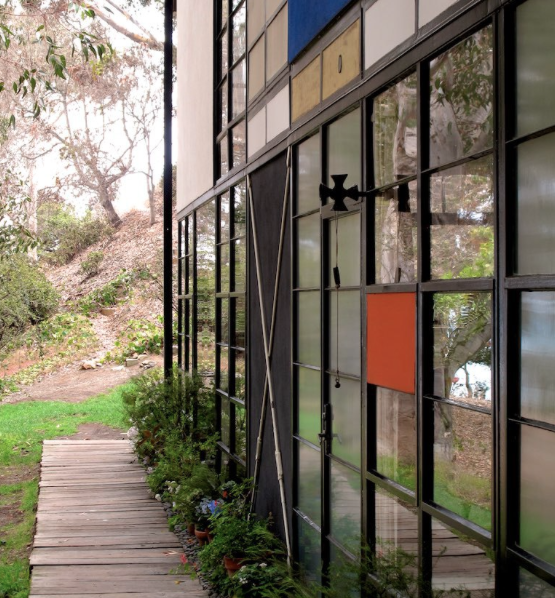
Photograph by John Zackerle.
Personal Touches
People sometimes confuse modernist gardens with austere, hard-edged contemporary spaces that have too many shiny surfaces and sharp angles. But at the Eameses’ house, nature lived indoors as well as out and eclectic collections—of rocks and leaves and favorite houseplants—shared shelf space with books. As shown above, a drainage channel alongside the house’s foundation is home to a mismatched collection of container plants chosen for their pleasing idiosyncrasies. Ray Eames loved geraniums and flowering potted plants; she moved them around depending on what was in

